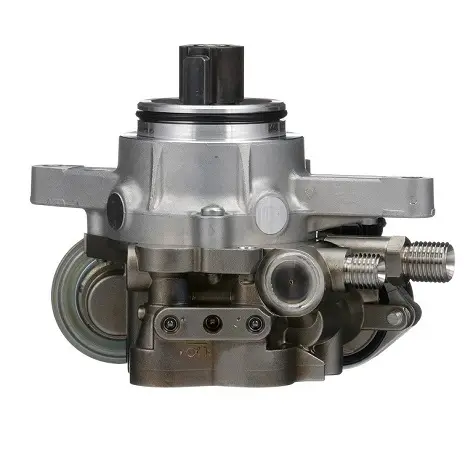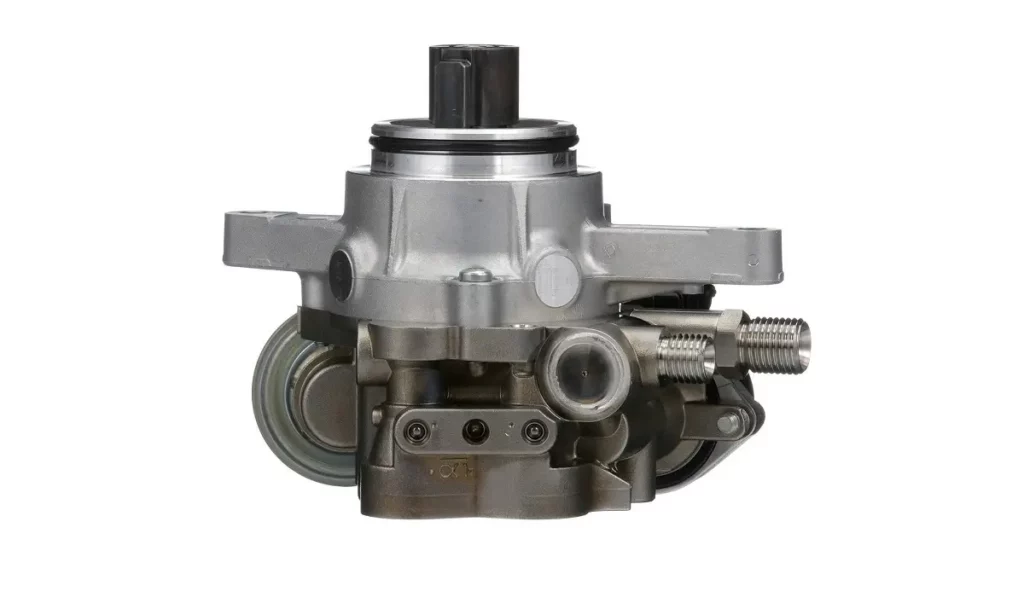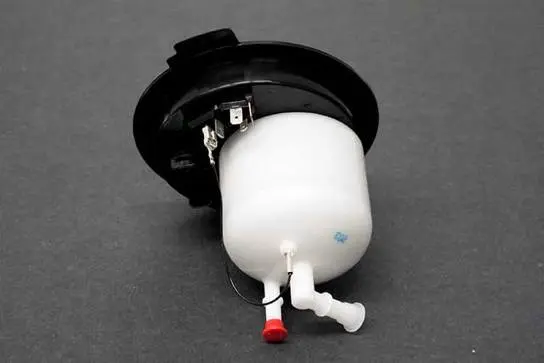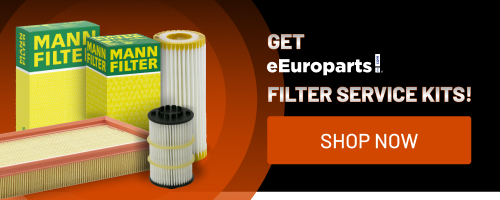Picture yourself cruising in your favorite Porsche Cayenne when, all of a sudden, something doesn’t feel quite on point. It’s like your trusty old friend has come down with a cold. You can sense it, can’t you? That anxious feeling creeps in as you realize your car is struggling. You may have a defective high-pressure fuel pump (HPFP).
No worries, we’ve got you covered! We aim to simplify things and explain them in straightforward, everyday language. Let’s discuss why the HPFP is important, how to spot any issues, and, most importantly, how to bring your car to its best condition. We’ll assist you in getting that engine humming like the good old days!
Porsche Cayenne 958 Fuel System Operation
Let’s go back to the early 2000s when Porsche decided to spice things up a bit. Instead of going with the usual fuel system, they went for something fancier — the Returnless Fuel System. It’s like a dynamic fuel highway, adjusting the low-pressure delivery to match what your engine craves. Why? Because it’s all about giving you a ride that’s not just powerful but eco-friendly, too!
So, as the fuel takes this exciting journey, it eventually hits the high-pressure fuel pump. This little superhero cranks things up from a modest 72 psi to a jaw-dropping 580 to 1740 psi, depending on how much power your engine’s craving. Then, this pumped-up fuel heads over to the fuel injector, where it gets all fired up to produce the awesome power you feel when you hit the gas. It’s like your Porsche’s very own adrenaline rush!
You Will Notice it! — Driving With a Defective High-Pressure Fuel Pump
Roving around in your Porsche Cayenne with a wonky high-pressure fuel pump? Yeah, it’s different from the kind of experience any car owner signs up for! Buckle up as we get into the specifics of what you can encounter if your high-pressure fuel pump fails.
So, here’s the deal: when that high-pressure fuel pump starts acting up, it can throw a wrench into your Cayenne’s performance. No bueno, right? This can also lead to an engine warning light and can even lead to your car giving up while driving. You might also notice a delayed starting — the engine starter works perfectly fine, but the engine is still not roaring. In this case, it usually means fuel delivery issues.
Be Wary of the Petrol Smell!
Danger! Danger! Danger! The smell of petrol in or around your vehicle indicates something is amiss in the fuel system. It’s essential to recognize this smell promptly, as it signifies a fuel leak, which causes an issue with the high-pressure fuel pump. Ignoring this warning sign can lead to more catastrophic problems, including a potential fire hazard.
Get a whiff under the rear right seat and on the rear right wheel arch. If a fuel smell is present, this indicates a leak in the low-pressure side of the fuel system. You should fix this first, as it can affect the high-pressure fuel system.
Open the hood and take a sniff; several fuel lines in there could also be leaking. Common sense dictates that the fuel system needs to be sealed, whether it is low-pressure or high-pressure. We definitely don’t want your sleek, sporty SUV to become the hottest barbecue joint in town just because of a silly fuel leak! Let’s make sure your wheels stay intact.
Oil Leak Underneath the Car?
In our experience, one of the signs visually seen on a defective high-pressure fuel pump is oil leaking from the pressure dampener. The intensity of the leak differs from how severe the issue is. In some cases, the leak is so bad that it drips underneath. However, it is important to note that this should not be confused with other components that may also have oil leakage. The pressure dampener is attached to the high-pressure pump and can be seen with an inspection mirror, inspection light, and determination.
Figuring Out the High Pressure Fuel Pump Problem!
Take note! Any issues on the low-pressure fuel delivery system will affect the high-pressure delivery system, too! With that thought in mind, we will start tackling our issue with the low-pressure fuel system. We will need some tools for our diagnosing strategy.
- OBD diagnosing tool
- Fuel pressure gauge
- Screwdriver set
- ½ drive Ratchet set
- Spline socket M14 bit
- Disposable rags
- Working gloves
- Safety goggles
- ½ gallon container
It’s a no-brainer. If the tank’s emptier than a desert on a hot summer day, your car will just sit there looking cute but going nowhere! Check your fuel levels first! Now that you’ve sorted that, it’s time to roll up our sleeves and put in some good old elbow grease to figure out what’s happening
Reading out Fault Memory
Using your OBD diagnostics scanner, read the fault code memory recorded in the engine control unit — Digital Motor Electronics. Suppose the DTCs that appeared are P1023 Fuel Pressure/quantity too low at the start, P1026 Fuel high pressure implausible, P1031 Fuel high-pressure sensor stuck (stuck) in the Engine start and, ETC, you are on the right path thinking that there is an issue on fuel delivery system.
Removing the Rear Right Seat
Now that the DTCs are confirmed to indicate failure in the fuel delivery system, we have to remove the rear seats to access the fuel flange with the fuel connection to the engine side. Just be careful not to damage those seat clips, as they tend to break easily on removal.
Caution! Precaución! Vorsicht! Safety first!
We must prepare safety precautions before starting the exciting part — opening fuel lines. You must ensure you are in a well-ventilated area while working on this issue. Make sure that there’s sufficient air circulation around you.
Secondly, ensure you have a trusty fire extinguisher within arm’s reach. Safety first, remember?
And last but definitely not least, let’s state the obvious — NO open flames and sparks!
Checking Low-Pressure Fuel System
Once the rear seat is removed and safety precautions have been completed, we are ready to disconnect the fuel line. Just kidding! We still need to locate the fuse for the low-pressure fuel pump.
It is on the engine compartment fuse holder, fuse #13-25A. You must remove this first, start the car, and wait for it to stall. This is to prevent you from getting sprayed with fuel upon removal. Make sure to clean up any spilled petrol to stay clear-headed from the fumes and keep you and your ride safe.
Then, you will have to switch the ignition off and install the fuel pressure gauge — it will be in series to the fuel lines. Reinstall the fuse and start the car.
The value that you should see in the gauge should be 80 to 87 psi — the same test can also be done while driving, generating 65 to 72 psi.
This test is called the low-pressure fuel pump performance test. Remember that if these values are not reached, you must first replace the low-pressure fuel pump to continue your fault-finding.
Another test to know if the low-pressure system is good is the holding pressure test. To do this, monitor the gauge after switching off the car with the gauge still connected.
The pressure shouldn’t drop more than 14 psi after 1 hour. Remember that the tool shouldn’t have even the tiniest leaks; this will falsify your result. If it drops more than 14 psi, you are looking for a defective pressure regulator integrated into the fuel flange.
The last test will be the low-pressure fuel pump delivery rate. On this test, you must disconnect the tool going to the engine and connect the pressure regulator — it should be rated to 36 to 39 psi.
Prepare a measuring container holding at least half a gallon and disposable rags. You will then activate the fuel pump again using your OBD diagnosing tool. The fuel will escape come out quickly, so be prepared! Time the activation time for 20 seconds. The fuel that will come out should be more than 36 oz. If it is less than this, you might be looking for a blocked fuel filter or a weak low-pressure fuel pump.
Grab Your Tools and Fix Your Porsche Cayenne 958!
Now that we have confirmed that your high-pressure fuel pump is defective, it is time to replace it. Let’s get our tools ready for this fix to make it quick and spot-on.
- ½” ratchet and socket set
- Screwdriver set
- Crowfoot socket set
- Disposable rags
- Working gloves
Disconnect the Power Supply
Working on the fuel system while there’s still a power supply seems terrifying, right? Remove the power supply! You are right to be terrified if a catastrophic thing happens! You should disconnect the battery ground strap under the driver’s seat cover — forward right corner of the seat mounting.
Remove the Left Cross-Panel
You will then have to remove the left cross panel. For this, you must remove the wiper arms, cowl panel, and power supply cable to jump-start the connection. All of these are done so that you can remove the culprit without potentially hurting yourself.
Dispatching the Culprit
For the main event — we’re working on this high-pressure pump, and it’s a bit of a tight squeeze in there even after all the work that we have done. First, we’ve got to get rid of the low-pressure line connected to the high-pressure pump at their meeting point. Make sure you throw some disposable rags underneath to catch any mess. Grab an open-ended wrench to do this.
Then, there’s this crash panel in the way, and it’s really snug in there! So, you’ll need to unscrew the three screws on that panel using a straight ring wrench and pull it off with your fingertips.
It’s time to free that high-pressure line from the union nut on the pump. Don’t worry; we’re making progress. Next, remove the high-pressure pump by removing the hexagon-head union nuts and the fastening screw.
And to make life a bit simpler when removing the high-pressure pump, unscrew the M8 screw socket holding the high-pressure line in place. Now, the final act: gently tug that high-pressure pump out of the cylinder head. Give it a little wiggle and twist it to disconnect the flow control valve. And there you have it, our high-pressure pump adventure in a nutshell.
Notes for Installation
Safety always comes first — no exceptions! Everything we’ve discussed in our safety discussions must be strictly followed. Additionally, any seals we’ve taken out must be replaced without fail. And remember, don’t ever use sealant with silicone or silicone spray when the fuel system is open. Silicone can mess with the engine, as it won’t burn off and could harm the oxygen sensors.
Next is the Oldham coupling between the camshaft and the high-pressure fuel pump. Make sure that it is fitted correctly and is not broken. If it is damaged, replace it. Lastly, when dealing with high-pressure lines, don’t bend them — ensure the connection points are clean and undamaged.
Speaking of high-pressure lines, make sure to install them with the same gap when you remove them. Hand-tighten union nuts on all connection points before tightening the bolts and screws. Keep those conical/ball joints clean and check for leaks once everything’s fitted.
Quality Parts, Quality Drive
The Porsche Cayenne 958 is a fantastic ride, famous for its speed and style, but like any car, it might run into some problems as it ages. To make sure your Cayenne keeps giving you that awesome driving experience, it’s important to fix these issues without delay. Opt for top-notch OEM replacement parts from a reliable source to ensure your Porsche stays dependable and performs well. Check out eEuroparts.com for a variety of Porsche Cayenne parts to keep your car in top shape.







